.png)
10 Best Low Code AI Agent Platforms in 2025

AI agents are no longer a futuristic idea. The market has already hit $7.6 billion in 2025 and is on track to jump to $50.31 billion by 2030 with a jaw-dropping 45.8% CAGR. Enterprises are rushing in, with 85% planning to adopt AI agents in the coming years.
But here’s the problem: building these agents the traditional way takes months of coding, endless testing, and technical skills that many teams don’t have. By the time the project is ready, business priorities may have already shifted.
Today, building agents is much easier thanks to modern platforms that offer visual tools and prebuilt templates.
Enter the best low code AI agent platform solutions that are democratizing AI development. These platforms allow teams to deploy AI agents in hours, not months. No code platforms with drag and drop interfaces make building agents accessible to non-technical users, enabling anyone to create workflows and intelligent agents visually.
If you’re automating customer service or building intelligent assistants, the right low code AI agent platform can turn your vision into reality.
What Is a Low Code AI Agent Platform?
A low code AI agent platform is a development environment that enables users to create, deploy, and manage intelligent AI agents using visual interfaces, drag-and-drop components, and minimal coding. These platforms combine the power of large language models (LLMs) like GPT-4 and Claude with intuitive building tools that make AI accessible to non-technical teams.
Think of these platforms as "IKEA for AI agents" – you get pre-built components that snap together easily, but with the flexibility to customize and extend functionality when needed. Unlike traditional AI development that requires months of coding, AI agent platforms let you deploy working solutions in days or even hours.
Key benefits for businesses include:
- Faster deployment: From concept to production in weeks instead of months
- Cost efficiency: No need to hire specialized AI developers
- Customizability: Tailor agents to specific business workflows
- Scalability: Handle growing workloads without proportional cost increases
- Integration capability: Connect seamlessly with existing business systems.
What Are the Benefits of Using AI Agent Builders?
AI agent builders are transforming the way businesses create and deploy intelligent solutions. By offering simplified development environments, these platforms allow teams to focus on business logic rather than getting bogged down in technical details.
With an ai agent builder, you can quickly assemble, test, and launch ai agents using intuitive visual interfaces and prebuilt components, dramatically reducing the time and cost of development.
One of the biggest benefits is improved reliability—agent builders provide proven frameworks and essential building blocks, so your ai agents are less prone to errors and easier to maintain.
Enhanced capability is another key advantage: agent builders make it possible to create complex workflows that automate multi-step processes, coordinate between different systems, and even enable multiple agents to work together.
Perhaps most importantly, ai agent builders open the door for non-technical users to create ai agents. This democratizes AI development, empowering business teams to automate tasks and improve productivity without waiting for IT resources.
Whether you’re looking to streamline operations or build sophisticated autonomous agents, agent builders make it faster, easier, and more accessible than ever before.
Types of AI Agent Builders
There are several types of ai agent builders available, each catering to different needs and technical skill levels. Low-code and no-code platforms, such as Microsoft Copilot Studio and Stack AI, are designed for non-technical users and business teams. These platforms offer drag-and-drop visual interfaces and prebuilt tools, making it easy to build ai agents without writing code.
Open-source frameworks like LangGraph and AutoGen provide more flexibility and customization options for technical teams. These agent builders are ideal for organizations that need to build highly specialized ai agents or integrate with custom systems, but they do require more programming knowledge.
Traditional automation tools, such as UiPath and Postman, can also function as agent builders. While these tools are primarily focused on automating business processes, they can be extended to build ai agents with more complex logic. However, they often require a steeper learning curve and more coding expertise compared to low code platforms.
No matter which type you choose, the right ai agent builder will help you build ai agents that fit your business needs, whether you’re looking for speed, flexibility, or deep customization.
Low Code vs No Code AI Agent Platform – Which Should You Choose?
Understanding the difference between best low code AI agent platform 2025 vs no code AI agent platform options is important for making the right choice for your team.
Check out this AI agent platform comparison table for more information:
.png)
Real-world analogy: No-code is like ordering from a restaurant menu – you pick from available options quickly. For most businesses, low code AI agent platforms offer the perfect balance of speed and flexibility.
How We Ranked These Platforms
Our AI agent platform comparison evaluated platforms based on five critical criteria:
1. Ease of Use - How quickly can non-technical users get productive?
2. Integration Capabilities – Does it connect with your existing tech stack?
3. Customization Depth – Can you build beyond templates for specific needs?
4. AI Model Compatibility – Support for latest LLMs and AI techniques
5. Pricing & Scalability – Value proposition as you grow
These best low code AI agent platforms 2025 were tested with real-world scenarios including customer service automation, lead qualification, and workflow orchestration. We prioritized platforms with proven enterprise adoption and active development communities – ensuring you're investing in solutions that will evolve with the rapidly advancing AI landscape.
This ranking shows 2025 capabilities, not outdated information, and focuses on platforms successfully deployed in production environments across various industries.
Let's now see the best platforms and how these AI agents work.
AI Agents in Various Industries
AI agents are making a significant impact across a wide range of industries, thanks to the versatility of modern ai agent builders. In customer service, ai agents power chatbots and virtual assistants that handle inquiries, resolve issues, and provide 24/7 support, improving both efficiency and customer satisfaction.
In healthcare, ai agents are used to analyze patient data, assist with diagnostics, and deliver personalized recommendations, helping medical professionals make better decisions and improving patient outcomes.
The finance sector leverages ai agents to detect fraud, automate compliance checks, and offer tailored investment advice, all while maintaining high standards of accuracy and security.
Marketing teams use ai agents to personalize customer experiences, segment audiences, and automate campaign management, resulting in more effective outreach and higher conversion rates. With the right agent builder, organizations in any industry can harness the power of ai agents to streamline operations, enhance service delivery, and drive innovation.
AI Agent Use Cases
The versatility of ai agents means they can be applied to a wide variety of business challenges.
One of the most common use cases is automating tasks—ai agents can handle repetitive processes like data entry, scheduling, and bookkeeping, freeing up human employees to focus on more complex tasks.
Customer support is another major area where ai agents shine. With the help of an ai agent builder, businesses can deploy conversational agents that answer frequently asked questions, resolve issues, and provide instant assistance to customers around the clock.
Data analysis is also a key use case. Ai agents can sift through large volumes of information, identify patterns, and generate actionable insights, helping organizations make data-driven decisions.
Whether you’re looking to automate repetitive tasks, support customers, or analyze complex data, ai agent builders make it easy to create ai agents tailored to your specific needs.
The 10 Best Low Code AI Agent Platforms in 2025
Here are the best no code AI agent platforms:
1. Ampcome
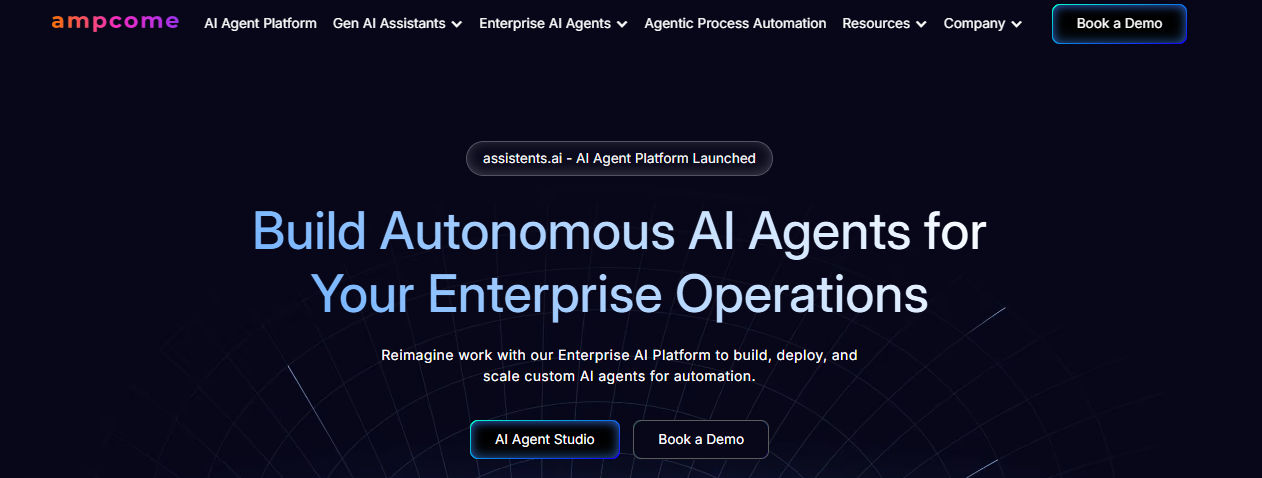
What it does: Ampcome helps companies cut down repetitive work by using smart AI agents. It’s built for teams in finance, logistics, and supply chains that spend too much time on manual tasks.
How it works: Its Agentic Workflow manages whole processes instead of just small tasks. The system adapts to the tools and flow you already use, so there’s no need to change your setup. The agents learn from daily activity, predict upcoming steps, and can even team up to share the workload.
Pricing: Details on Ampcome’s pricing are not public. Most businesses can request a custom plan directly from the company based on their scale and use case.
2. Relevance Ai

What it does: Relevance AI is the best low code AI agent platform 2025 that helps companies build and deploy AI agents that handle customer support, data analysis, and workflow automation. It’s designed for teams that want to speed up repetitive tasks.
How it works: The platform offers low-code tools where you can drag, drop, and configure agents to handle tasks like answering customer queries, pulling insights from databases, or connecting with other business apps. Multiple agents can work together on complex processes.
Pricing: Relevance AI offers tiered pricing. There’s usually a free starter plan with basic features for small teams, and paid tiers for advanced automation, higher usage, and enterprise support.
3. AgentHub

What it does: Like going to a restaurant with a pre-made menu instead of cooking from scratch. AgentHub offers ready-made AI agents for common business tasks.
Best for: Small businesses that want to get started quickly without building from scratch.
How it works: Pick a template (like "Resume Screener" or "Email Follow-up Agent"), customize it for your needs, and deploy in minutes.
Pricing: Starts at $295/month for business packages.
4. n8n

What it does: A visual workflow builder that's like creating a flowchart of tasks, but with AI superpowers built in.
Best for: Tech-savvy teams who want complete control and don't mind getting their hands dirty with some technical setup.
How it works: You create visual workflows by connecting different apps and services, with AI nodes that can analyze, summarize, or generate content along the way.
Pricing: Free if you host it yourself, or $24/month for cloud hosting.
5. Superagent
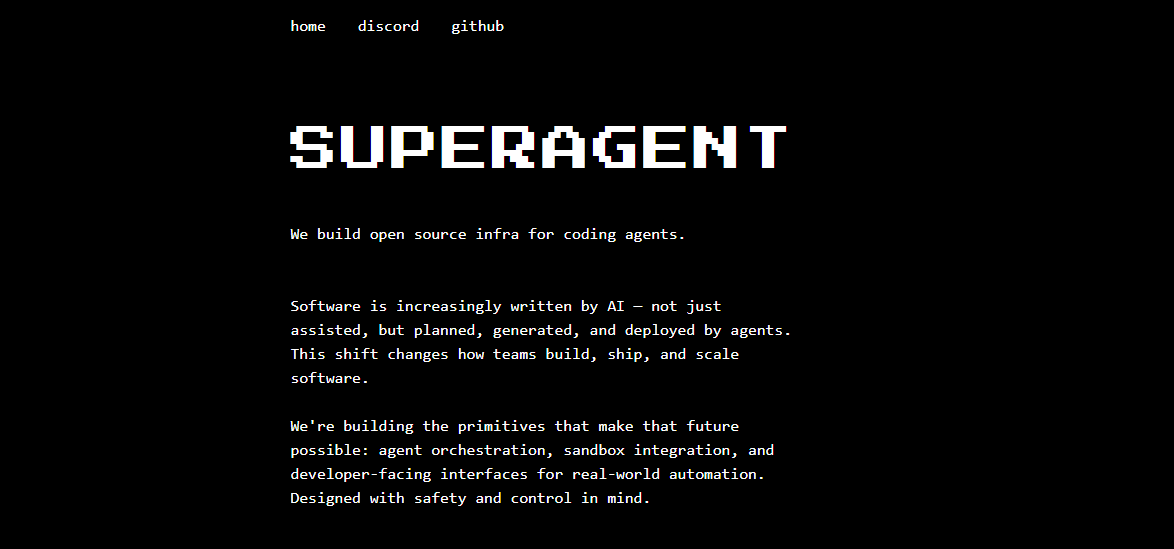
What it does: A code-first platform for developers who want to build custom AI agents and integrate them into existing applications.
Best for: Software development teams building AI-powered products or internal tools.
How it works: You define your agent's behavior using simple configuration files, and Superagent handles all the complex infrastructure behind the scenes.
Pricing: Open-source and free to use.
6. Flowise

What it does: Like creating a mind map, but instead of ideas, you're connecting AI components to build intelligent applications.
Best for: Developers and AI enthusiasts who want to prototype AI applications quickly without writing code.
How it works: Drag and drop different AI components (prompts, models, databases) and connect them visually to create chatbots or AI assistants.
Pricing: Completely free and open-source.
7. Lyzr Agent Studio
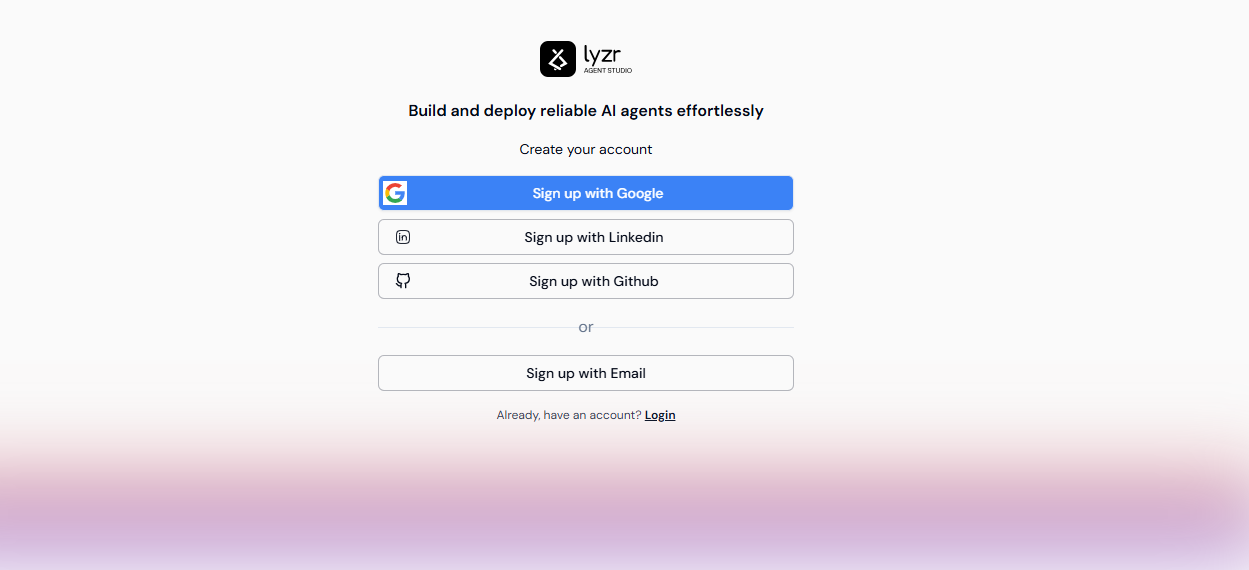
What it does: Built specifically for large companies that need AI agents with enterprise-grade security and compliance.
Best for: Banks, healthcare companies, and other regulated industries that need robust security and governance.
How it works: Visual development environment with pre-built agents for different industries, plus enterprise features like role-based access and private cloud deployment.
Pricing: Starts around $19/month per user, with enterprise custom pricing.
8. IBM Watsonx.ai

What it does: IBM's comprehensive enterprise AI platform that includes agent building tools with the full backing of IBM's infrastructure and support.
Best for: Large corporations already using IBM systems, or organizations with strict compliance requirements.
How it works: AgentLab provides drag-and-drop agent building with deep integration into IBM's data and AI ecosystem.
Pricing: Enterprise custom pricing (contact IBM for quotes).
9. Lindy
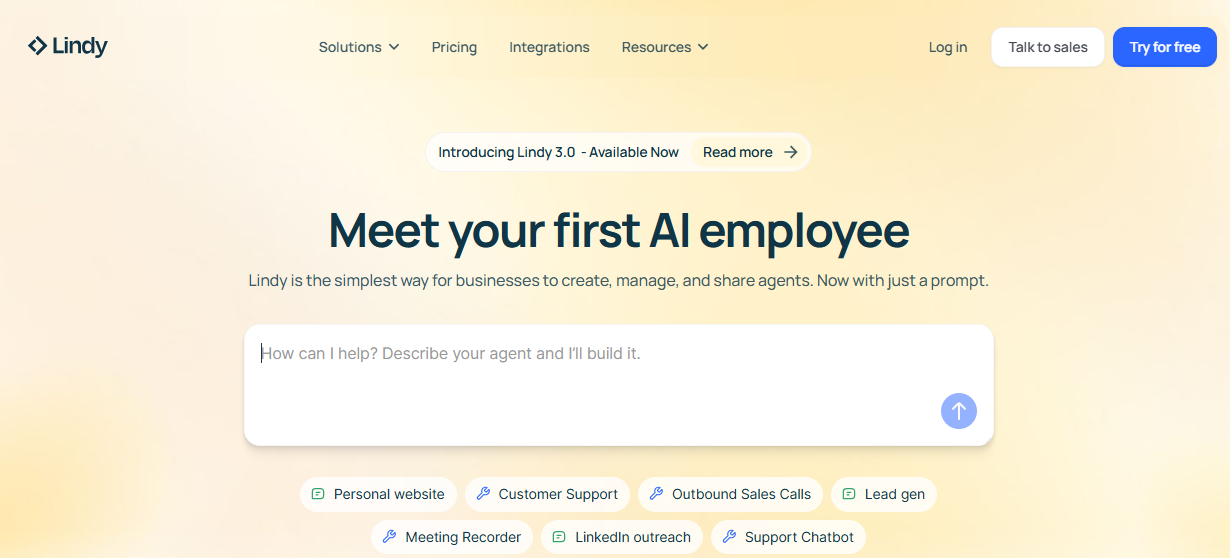
What it does: Designed for small and medium businesses to automate daily operations without needing a technical team.
Best for: SMBs and teams that want simple automation for tasks like email management, CRM updates, and customer support.
How it works: Choose from pre-made templates or build custom workflows using their visual builder, with integrations to 3,000+ business apps.
Pricing: Free tier available, paid plans start at $49/month.
10. SmythOS
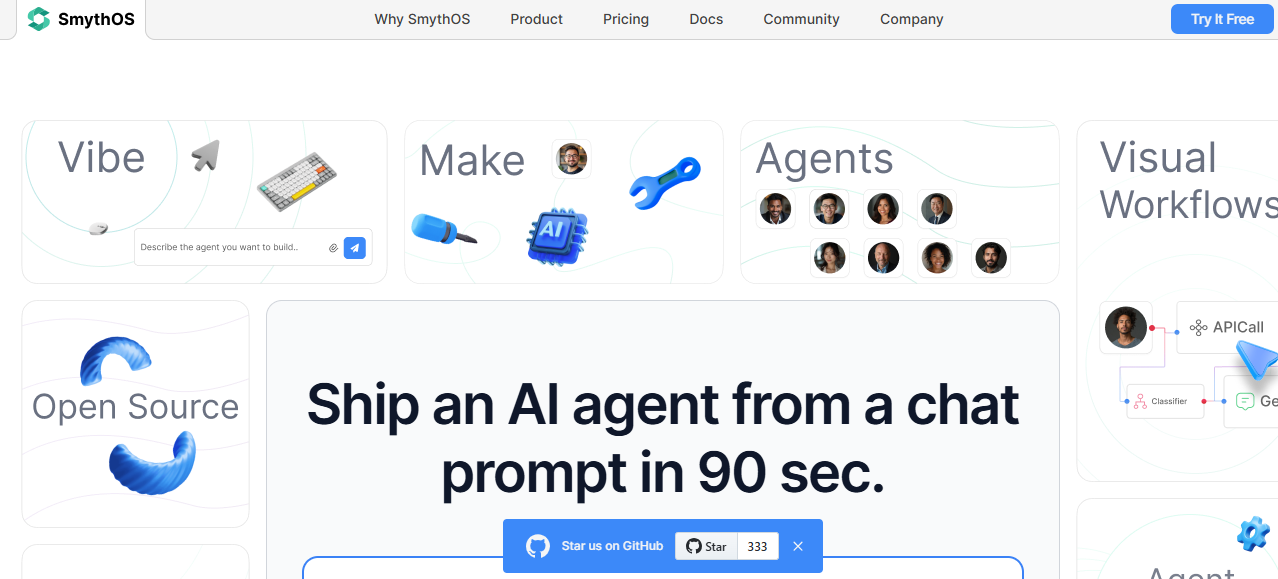
What it does: An "operating system" for AI agents that gives you enterprise features while maintaining full control over your data and code.
Best for: Companies that want enterprise capabilities but prefer open-source solutions or need on-premises deployment.
How it works: Visual agent builder with debugging tools, plus the ability to deploy anywhere – your servers, the cloud, or even as ChatGPT plugins.
Pricing: Generous free tier, with enterprise support available.
Feature-by-Feature AI Agent Platform Comparison Table
.png)
Real-World Examples of AI Agents
AI agents are already part of our everyday lives and business operations. Virtual assistants like Siri and Alexa are classic examples, using advanced ai agent builder technology to understand natural language commands and complete tasks for users.
In customer service, many companies deploy chatbots built with agent builders to handle inquiries, process orders, and provide support without human intervention.
In healthcare, ai agents analyze medical images, assist with diagnoses, and help manage patient care, while in finance, they monitor transactions for fraud and offer personalized investment recommendations. Businesses also use ai agents to automate scheduling, send reminders, and manage workflows, making operations smoother and more efficient.
These real-world examples highlight how ai agent builders empower organizations to create intelligent, autonomous agents that drive productivity, improve service, and unlock new possibilities across
Best Practices for Building AI Agents
Building ai agents that deliver real business value requires more than just picking the right ai agent builder—it’s about following a set of proven best practices that ensure your agents are effective, reliable, and ready to tackle complex tasks.
1. Define Clear Goals and ObjectivesStart by outlining exactly what you want your ai agent to achieve. Whether it’s automating customer support, managing business processes, or handling multi agent coordination, having a clear purpose will guide every step of agent development and help you measure success.
2. Choose the Right AI Agent BuilderNot all agent builders are created equal. Select an ai agent builder that matches your team’s technical skills, integration needs, and scalability requirements. Look for platforms with intuitive visual interfaces and strong support for building ai agents that can adapt as your business grows.
3. Design Intuitive WorkflowsA successful ai agent should be able to complete tasks efficiently and respond to user inputs naturally. Use visual interfaces and drag-and-drop tools to map out workflows that are easy to follow, ensuring your agents can handle both simple and complex tasks without confusion.
4. Test and Iterate FrequentlyBuilding ai agents is an ongoing process. Regularly test your agents in real-world scenarios to catch issues early and refine their behavior. Iteration helps you optimize agent performance and ensures your solutions stay relevant as business needs evolve.
5. Monitor and Maintain Your AgentsOnce your ai agents are live, continuous monitoring is key. Track how well they complete tasks, respond to user inputs, and adapt to new challenges. Regular maintenance keeps your agents reliable and ready for whatever comes next.
6. Prioritize Security and ComplianceAI agents often interact with sensitive data and external tools. Make sure your agent builder supports robust security features and compliance standards, so your agents protect business information and meet regulatory requirements.
7. Harness Natural Language Processing (NLP)To create ai agents that truly understand and assist users, leverage natural language processing. Effective NLP enables your agents to interpret user inputs, extract insights, and deliver responses that feel human and helpful.
8. Enable Multi-Agent CoordinationFor more advanced use cases, consider building agents that can collaborate with other agents or even human agents. Multi agent coordination allows your solutions to tackle complex workflows, distribute workloads, and adapt to changing requirements seamlessly.
By following these best practices, you’ll be well on your way to building ai agents that not only complete tasks efficiently but also scale with your business, adapt to new challenges, and deliver lasting value.
How to Choose the Best Low Code AI agent Platform 2025
Selecting the best low code AI agent platform for your organization requires matching platform capabilities to your specific needs:
1. Assess Your Technical Capabilities
- Non-technical teams: Choose no-code options like Lindy.ai or LiveChatAI
- Some technical skills: Consider low-code platforms like Botpress or n8n
- Developer resources: Explore open-source options like Langflow
2. Define Your Primary Use Case
- Customer service: LiveChatAI, Voiceflow, or Botpress
- Business process automation: Lindy.ai or n8n
- Complex multi-agent workflows: CrewAI
- Enterprise integration: Microsoft Copilot Studio
3. Consider Integration Requirements
- Microsoft ecosystem: Copilot Studio is the clear choice
- Diverse tool landscape: n8n offers the most integrations
- CRM-focused: Agent.ai or Lindy.ai excel here
4. Evaluate Budget and Scaling Needs
- Budget-conscious: Start with open-source options like Langflow
- Usage-based scaling: LiveChatAI offers transparent pricing
- Enterprise features: Microsoft and CrewAI provide comprehensive solutions
5. Plan for Future Growth
Consider platforms that can evolve with your needs but offer expansion paths as your AI agent requirements.
Why Now? Trends Making Low Code AI Agent Platforms Mainstream
The convergence of technological and market trends has made 2025 the breakthrough year for AI agent platforms:
1. Advanced AI Models Become Accessible
GPT-4, Claude 3.5 Sonnet, and other frontier models now power low-code platforms. The democratization of advanced AI through APIs has eliminated the barrier that previously required deep ML expertise.
2. No-Code Movement Maturation
The no-code and low-code space has matured over the past few years. People are already comfortable creating apps through drag-and-drop tools, which makes the agentic process automation far less intimidating. The groundwork has been laid for teams to build automation without starting from scratch.
3. Enterprise AI Adoption Acceleration
Enterprises no longer debate the value of AI. The real question is speed. Low code platforms shorten timelines dramatically, letting companies launch and test agents without waiting for large development cycles.
4. Workforce Transformation
Most businesses don’t have endless technical resources. The best low code AI agent platform 2025 makes it possible for existing teams to set up AI-powered workflows without hiring new specialists. It’s about turning everyday employees into builders.
5. ROI Pressure
Organizations are under constant pressure to streamline operations and free up human time. Low code AI platforms give them a direct way to cut repetitive work, automate processes, and allow people to focus on higher-value tasks.
Conclusion
The best low code AI agent platform 2025 is no longer just a buzz in tech circles. They're becoming the backbone of how businesses run day-to-day work. Ampcome is at the front of this shift, giving teams a way to handle complex workflows without endless coding or setup.
Instead of spending hours on manual tasks, your team can finally focus on what moves the business forward. If you’re ready to see how this works in practice, it’s the right time to try Ampcome. Let the agents take care of the routine, while you and your team focus on the bigger picture.
Start your free trial today.
FAQs
1. What is the best low code AI agent platform in 2025?
CrewAI leads for complex multi-agent scenarios, while Lindy.ai excels for business users needing rapid deployment. The best choice depends on your technical requirements, use case complexity, and integration needs.
2. Is low code AI better than no code? Low code AI platforms offer more customization and can handle complex scenarios, while no code platforms enable faster deployment for standard use cases. Low code provides the best balance of speed and flexibility for most enterprises.
3. Can I build AI agents without coding? Yes, platforms like Lindy.ai, LiveChatAI, and Agent.ai enable complete AI agent creation without any coding knowledge through visual interfaces and drag-and-drop builders.
4. How do AI agent platforms compare in pricing?
Pricing varies significantly: open-source options like Langflow are free, entry-level platforms start around $20-50/month, while enterprise solutions can cost $99+/month. Most offer usage-based pricing that scales with your needs.

Transform Your Business With Agentic Automation
Agentic automation is the rising star posied to overtake RPA and bring about a new wave of intelligent automation. Explore the core concepts of agentic automation, how it works, real-life examples and strategies for a successful implementation in this ebook.
More insights
Discover the latest trends, best practices, and expert opinions that can reshape your perspective
Contact us












